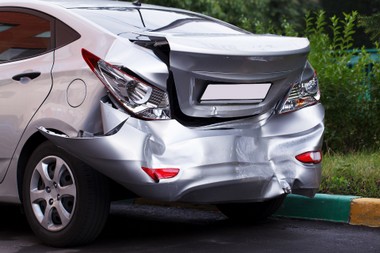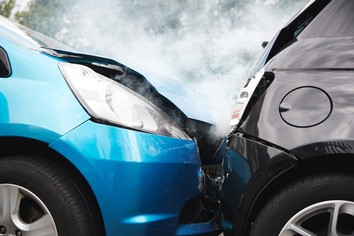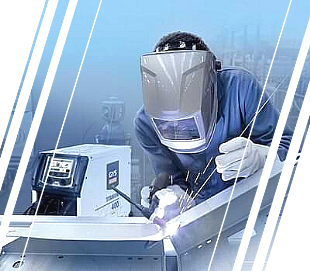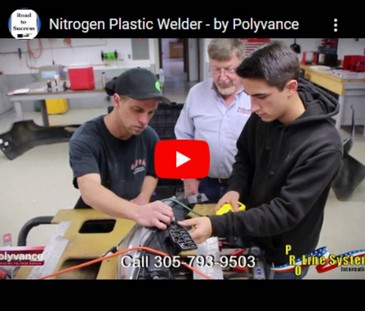Repairing Plastic Autobody Parts May Be The Solution to Parts Shortage?
Published by Giulio Valle in Informational · 12 April 2023
Tags: Repairing, Plastic, Car, Parts, May, Be, The, Solution, to, Plastic, Parts, Shortage
Tags: Repairing, Plastic, Car, Parts, May, Be, The, Solution, to, Plastic, Parts, Shortage
Can Plastic Repair Be The Answer To The Auto Body Parts Shortage?
It makes sense to repair broken parts rather than replace them if you can't find replacements. Perhaps it's time to dust off that old plastic welder and pull out the two-part bumper repair adhesives.
Despite the problems with the world economy's supply chain, getting parts to fix vehicles is a real challenge today. We at Polyvance hear about plastic repair from repair shops regularly. According to one shop, a specific Korean-brand minivan's rear bumpers were out of stock for at least three months. How do we keep the economy moving despite these difficulties?
Because you can't get parts, it makes good sense to repair them if they're damaged. Parts you would have thrown away a couple of years ago are now candidates for repair. Can't get a new front fender for two weeks? It's time to dust off the old hammer and dolly.
Modern Car Body Plastic Parts Repairs
 Many collision-damaged parts are manufactured from plastic—bumper covers, for example. Headlight tabs, windshield washer reservoirs, underbody trays, inner fender liners, wheel well, rocker moldings, and many others are all composed of plastic. A lack of these replacement parts may delay the repair of the entire vehicle. It might be a suitable time to dust off the old plastic welder and two-part bumper repair adhesives.
Many collision-damaged parts are manufactured from plastic—bumper covers, for example. Headlight tabs, windshield washer reservoirs, underbody trays, inner fender liners, wheel well, rocker moldings, and many others are all composed of plastic. A lack of these replacement parts may delay the repair of the entire vehicle. It might be a suitable time to dust off the old plastic welder and two-part bumper repair adhesives.Advanced Driver Assistance Systems (ADAS) and Plastic Repairs are Essential
And Must Be Done Right!
When assessing a plastic repair, you should first and foremost research the OEM (original equipment manufacturer) procedures for any guidelines or statements on how to repair certain plastic parts. The most obvious example is bumper covers, full of sensors in late-model cars. You should also be cognizant that some OEMs prohibit the repair or refinishing of bumper covers if the operation of ADAS sensors is impacted.
You must use your wits if an OEM does not prohibit bumper cover repairs. For example, some manufacturers prohibit repairs within seven inches of a radar-based blind spot sensor mounted on the quarter panel behind the bumper. You may learn from this that if the damage is a tab on the bottom edge of the bumper cover far from any sensor, you should use your common sense to determine whether repairing it would interfere with an ADAS sensor.
Read More > Auto Body Dent Pullers FAQ's. Which is Best?
Headlights and Taillights Repair - Watch Video
The headlights and taillights are among the most expensive, mostly plastic components. They are getting more extensive and intricate, incorporating ADAS sensors, for example. Changing a few pricey headlights often renders an otherwise fixable vehicle useless. The only headlight damage a lot of times is a broken mounting tab as a result of bent radiator supports. If your headlight lens is undamaged and works appropriately but has just broken tabs, you can win a lot if you fix it. Repairing the headlight can benefit you, the technician, and the vehicle owner. To be specific, research OEM processes before attempting repairs. You might be able to purchase replacement screws from the OEM (if you can get them).
Vehicle's Windshield Washer Tanks
 Windshield washer tank repairs are an excellent chance to make some money. You can often find them jammed into the little storage space behind the bumper cover, which makes them susceptible to punctures and cracks during a front-end collision. You can typically get these parts pretty quickly, but this is 2032, and you may not be able to acquire them for weeks. Polyethylene (PE) is a material that is difficult to bond with (as is seen in body spreaders). As a result, windshield washer and radiator overflow reservoirs are best repaired by fusion welding.
Windshield washer tank repairs are an excellent chance to make some money. You can often find them jammed into the little storage space behind the bumper cover, which makes them susceptible to punctures and cracks during a front-end collision. You can typically get these parts pretty quickly, but this is 2032, and you may not be able to acquire them for weeks. Polyethylene (PE) is a material that is difficult to bond with (as is seen in body spreaders). As a result, windshield washer and radiator overflow reservoirs are best repaired by fusion welding.It is essential to determine the plastic type before plastic welding. These reservoirs are most likely made of polyethylene, polypropylene (PP), or occasionally a blend of the two (PP-PE). When welding these parts, fuse the welding rod and base material to ensure they match. Cosmetic appearance is not critical on these parts, which are not visible. A quick and professional-looking repair is not required to keep the car moving through the shop when a part is unavailable.
Inner Fender Liners
It is often unnecessary to replace inner fender liner components, which are usually discarded and replaced. Because the cosmetic appearance standards for these parts are not as rigorous as for bumpers, for example, a windshield washer reservoir can often be fixed without paint in a short time.
Because these parts are frequently manufactured from PE or PP plastic, identifying them is relatively simple. You will usually find the material's identification number on the backside. To determine the material, look for a symbol on the backside. Once you locate the material, pick the proper plastic welding wire.
Trim and Moldings
Even when parts are available for repair, trim, and moldings are often too expensive since they aren't available aftermarket. The part is usually attached to the vehicle using push-in clips inserted into mounting bosses on the backside. Even when the part is removed from the vehicle, the bosses are usually weakly attached to the central portion, which frequently breaks. The outer aspect appears fine, but the part cannot be utilized because a mounting boss is broken.
The limited surface area makes plastic welding the best option here. A nitrogen-plastic weld may still overheat the thin plastic, even when the flow is turned down to the lowest setting. Melting stainless steel wire mesh often provides the best results because it allows you to control the heat input to the substrate more easily. Locking the mesh down and welding some matching rods to it will restore the mounting boss' functionality without altering its outer surface appearance. Damaged plastic components will also be preserved from being thrown away for a century or more if they are repaired.
Replace vs. Repair
Many stores have avoided plastic repairs for years, opting to replace damaged parts. There are several reasons for this - replacement costs are relatively inexpensive, replacing parts is simpler, technicians may lack the skills, and so on.
However, today's limited parts availability has changed the calculation. If you cannot move cars through your shop and out to your customers because you lack parts, it's time to make plastic repairs to your ability. Two-part adhesives and plastic welders are the two most commonly used technologies.
Both technologies have been well-developed over the years and can produce quality results in most situations. If you do not fix plastics because you had a return once in 1999, you must do some research to see what the manufacturers currently have available.
Because technicians are already familiar with the same basic technology used in two-part seam sealers and panel adhesives, two-part adhesives are the more popular technology. Because the upfront expense is practically nothing, shops already have a two-part dispensing gun. Technicians are more comfortable with it.
The adhesive on the rear part of a bumper cover repair is created to have a short curing time and strength, whereas the adhesive on the front portion is made accessible to sand and feather. An adhesive covered in epoxy might be applied to the front of a bumper cover to ensure a smooth finish.
Choose an adhesive manufacturer and follow its instructions for plastic repairs. Polypropylene components, particularly, require special preparation, including the application of adhesion promoters.
Nitrogen Plastic Welding Produces Clean, Strong Results
With the advent of plastic welding using nitrogen, plastic welding equipment has come a long way in recent years. Thermoplastics (meltable plastics) are welded using welding rods matching the material of the substrate in industrial plastic welding, which has been around since the 1950s. Many plastic welding technologies are available, including nitrogen and hot air welding.
Adhesives are required to finish a weld repair. Although the equipment cost is higher than two-part adhesives, welding consumables are less expensive and can be used more quickly, as there is no curing time involved. Therefore, the two technologies are complementary.
Training
Having everything you need to start plastic repair work isn't enough; you also need technician training. I-CAR's hands-on and virtual plastic repair courses are just two of the choices available. Each manufacturer of plastic repair material and equipment provides training materials, including hands-on, instructor-led classes and YouTube videos.
Watch Video
Once you have the materials, equipment, and training to perform plastic repair, you won't have to go to your customers with a dented bumper cover and say, 'I'm sorry, but it will take three months to fix.'
Are you looking for an Auto Body Repair Equipment Supplier that provides best-in-class auto body repair equipment and great support? Click here to learn more about Pro Line Systems International Inc. and get a quote.
____________________________________
We provide free consultation before the sale of any equipment, so you can be sure
you are making the proper investment for your business.
So call anytime, we love talking to our customers.






